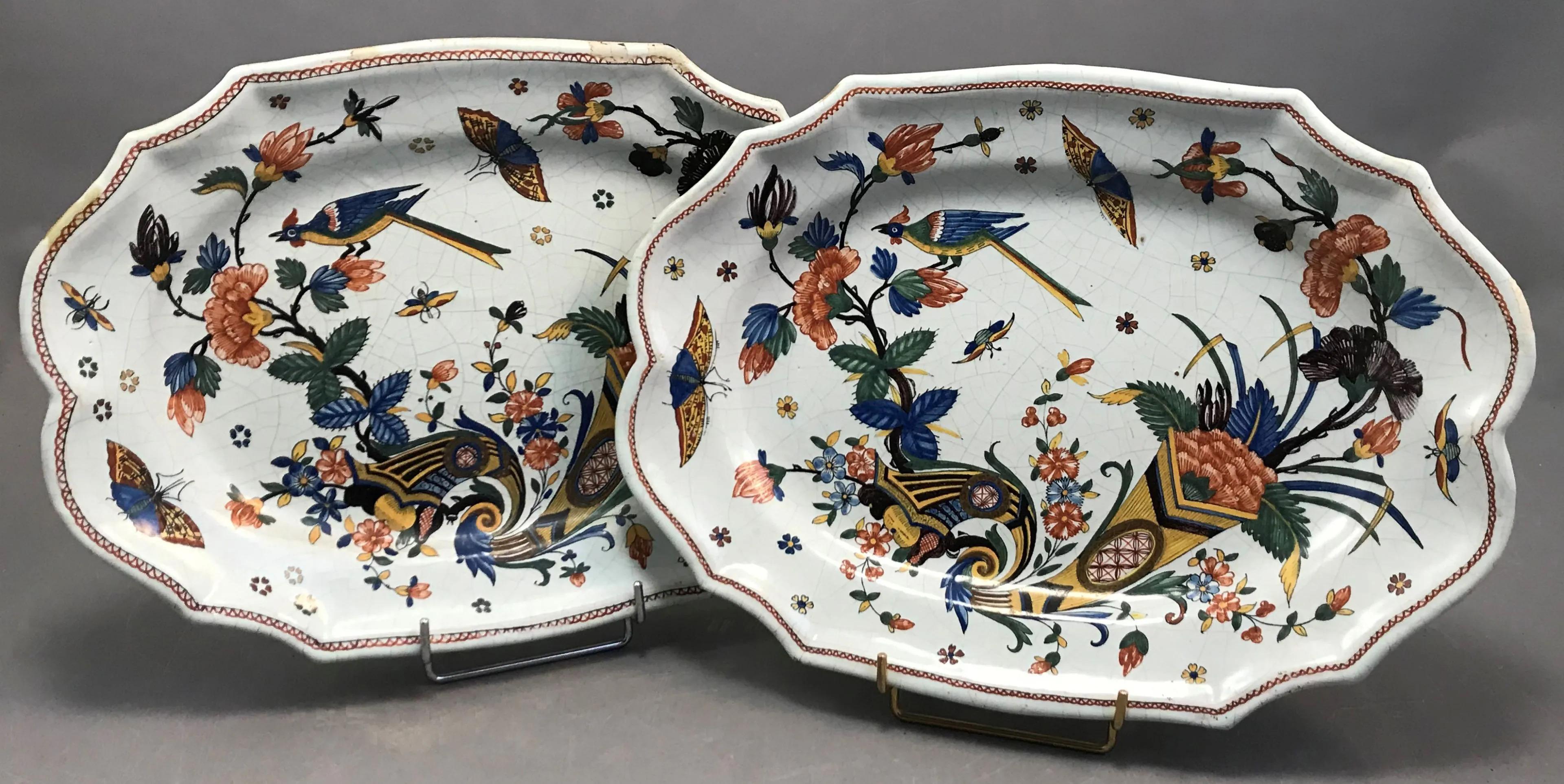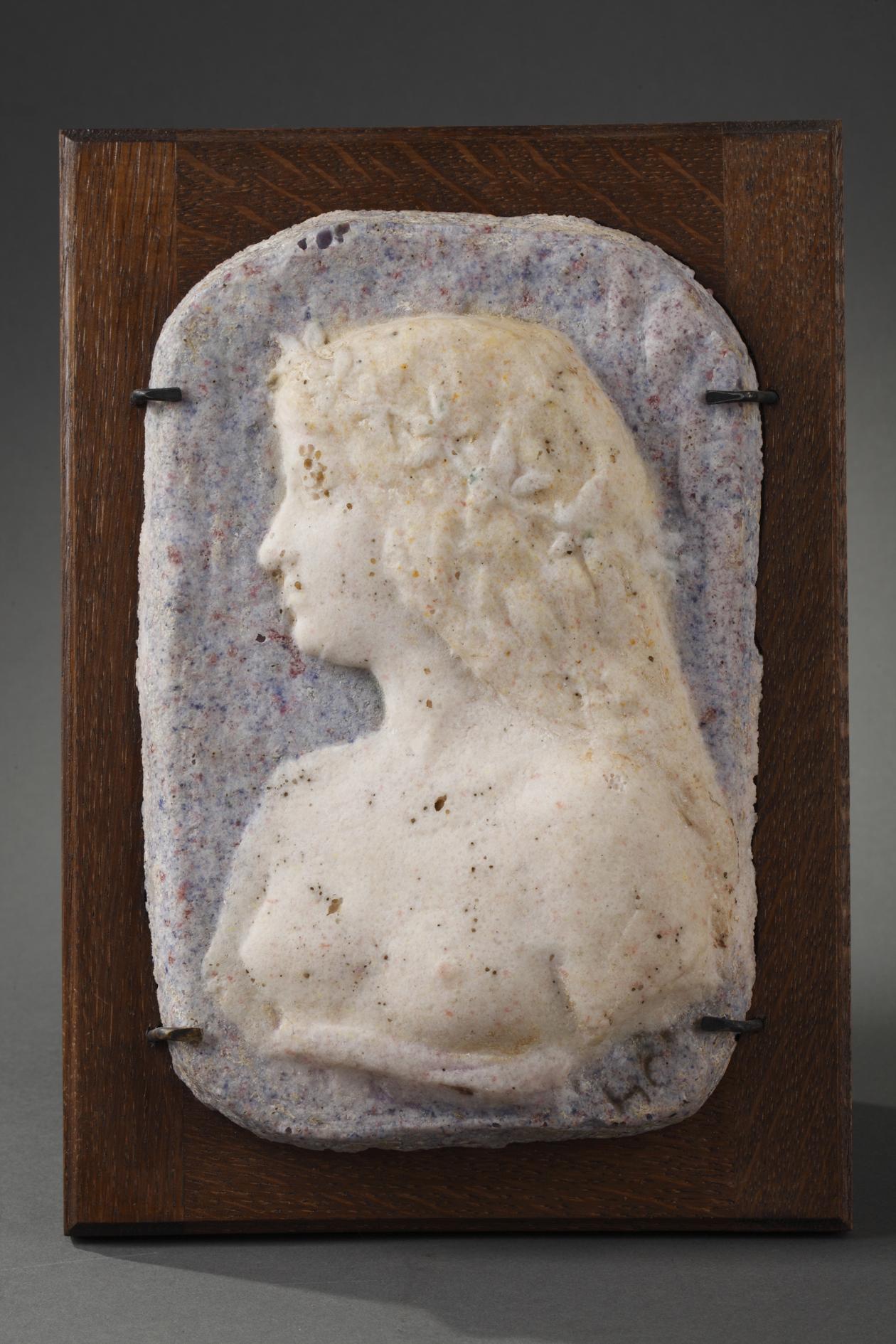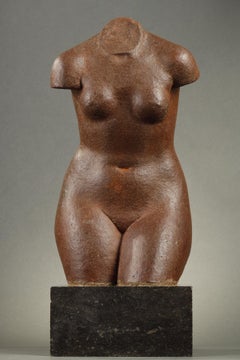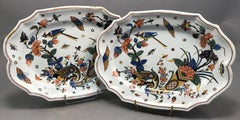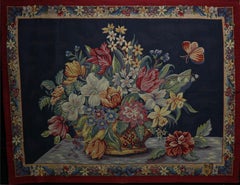Want more images or videos?
Request additional images or videos from the seller
1 of 8
Theodore DeckPlate "Louis XI"circa 1880
circa 1880
About the Item
Plate "Louis XI"
by Théodore DECK (1823-1891)
Polychrome glazed ceramic
Signed on the back by the painter " L. Loire "
and stamped on the reverse
Louis XI
France
circa 1880
diameter 30 cm
Biography :
Théodore Deck (1823-1891) was a French ceramist born in Guebwiller in Alsace. He is passionate about chemistry and physics. In 1841 he was apprenticed to the master stove fitter Hugelin father in Strasbourg. In two years, it learned of the legacy of the sixteenth century methods, such as inlay colored pastes in the manner of Saint-Porchaire. This learning does not stop him to occupy his free time drawing or modeling clay in the studio of sculptor André Friederich. Escaping military service, he toured Germany as it is traditional in-Stove Fitting potters Alsatian companions. The quality of his work allows him to get large orders in Austria for the castles of the provinces and the imperial palaces, including the palace of Schönbrunn. He moves on to Hungary Pest Prague, then back north through Dresden, Leipzig, Berlin and Hamburg. With his learning, he arrived in Paris in 1847. Recommended by Hugelin it comes to stoves factory Bavarian potter Vogt, located rue de la Roquette. The Revolution of 1848 interrupted production and Deck decides to return to his hometown. His family advised her to start a small workshop terracotta: there realizes some busts, statuettes, vases, lamps and famous ancient copies. Aware that this situation does not allow him to properly meet his needs, he returned to Paris in 1851 where he is employed by the Dumas widow, daughter of the potter Vogt for which he had worked. Hired as a foreman, it provides designs for the workers, while working the land itself.
The following year, he decided to settle near his former employer at 20, rue de la Fontaine au Roi, probably using their ovens. His brother Xavier Deck, joined him. It's officially in 1858 as Deck brothers create their business and moved to Paris at 46 Boulevard Saint-Jacques. At first, the brothers realize that pans coatings. But the business works so well that barely a year after installation they want to diversify their production and get into the ceramic coating of buildings and in the form of coins. Deck is interested in politics. In 1870, he opted for French nationality. Sympathizer of the Radical Party, he was elected deputy mayor in the 15th arrondissement of Paris.
In 1861, at the Salon des Arts and Paris Industry held on the Champs Elysees, Théodore Deck exhibited for the first time his achievements: these pieces with inlay decoration called "Henry II" and other parts covered with a turquoise blue enamel or decoration in the style of Iznik ceramics. If he wins a silver medal, critics are however mixed. The following year, on the occasion of the Universal Exhibition of 1862 in London, he conquers the English customers. It surprises by presenting as the previous year's Alhambra vase of exceptional dimensions (1.36 m high and 2.25 m in circumference) that is purchased by the South Kensington Museum a few years later. At the same exhibition is however noticed the many cracks in the glaze and poor adhesion to the dough. At the Exhibition of Industrial Arts in 1864 Deck manages to present parts not covered with cracked transparent enamels.
Théodore Deck explain the manufacture and properties of these transparent enamels in 1887 when publishing his treatise The earthenware. A year later, he made the first tests in reliefs transparent enamels. He will never abandon this technique which will also be taken up by many large factories. Drawing up pastiche of Islamic ceramics, Egyptian, Chinese, Japanese or majolica, it evolved characters, birds, flowers, ornaments of all kinds in a turquoise glaze, green, yellow or manganese. It is mainly a characteristic blue that the public retains of this technique: a brilliant turquoise shade it adopts immediately under the name Blue Deck or Blue Deck.
Théodore Deck string of innovations. On the occasion of the Universal Exhibition of 1867, the factory receives a silver medal thanks, among others, with metallic reflections he gets on some parts. If these exhibitions become the engine of these technical advances, they nevertheless represent considerable expense.
In 1869, Theodore Deck opens Halevy Street retail store in the Paris Opera district , the direction is provided by his sister.
On the occasion of the World Expo 1873 in Vienna, it has a spectacular garden of two meters wide, backed by a panel of nearly four meters high. All preserved in Geneva Ariana Museum, was made on drawings by Emile-Auguste Reiber.
Théodore Deck was appointed in 1875 to head the Development Committee of the Manufacture de Sèvres. Upon installation, Deck brothers meet in their artist friends and implement a principle of collaboration. Following this principle, Deck realizes plates, tiles or plates (rarely vases) that gives paint artists who for many already proven at the show. The sales gains are divided into two fair shares. Deck also trains apprentices who will in turn school. The most famous of them, Edmond Lachenal, will continue the work of the great ceramist developing his art in the spirit of Art Nouveau. Author of a magisterial treatise on earthenware, he became in 1887 - Supreme recognition - director of the Manufacture Nationale de Sèvres and leaves his brother Xavier, Richard and his nephew, the direction of their company. There will perform soft porcelain and improving production technology, manage to give their grandiose dimensions, covering its celadon glazes and turquoise.
Théodore Deck based since 1891 in Paris at the Montparnasse cemetery. It was his friend Auguste Bartholdi who created the monument engraved with the phrase: "He snatched the fire in heaven." The workshops will close Deck few years after his death.
- Creator:Theodore Deck (1820 - 1891, American)
- Creation Year:circa 1880
- Dimensions:Height: 0.79 in (2 cm)Diameter: 11.82 in (30 cm)
- Medium:
- Movement & Style:
- Period:
- Condition:
- Gallery Location:PARIS, FR
- Reference Number:Seller: N.68711stDibs: LU2514216440212
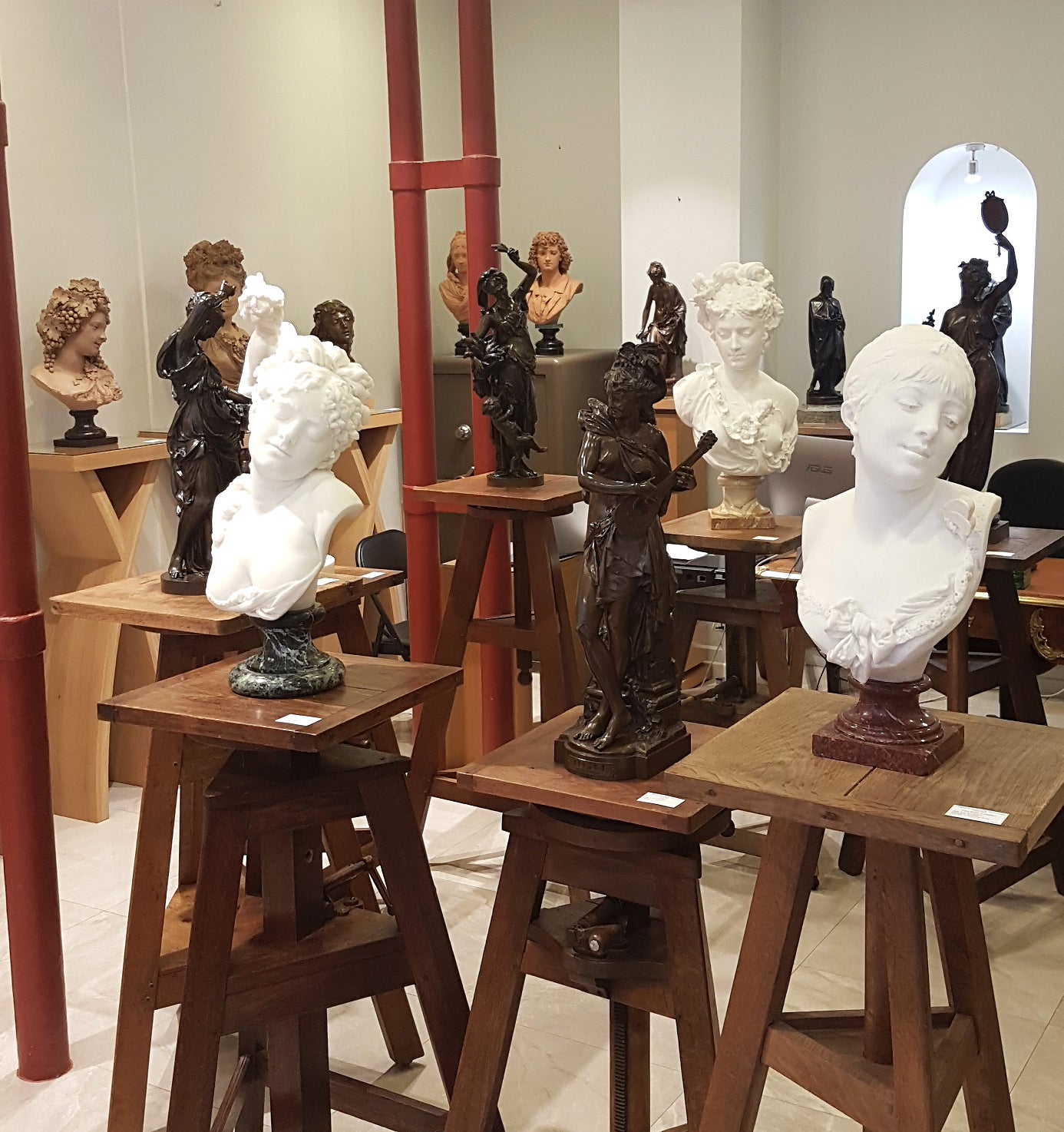
About the Seller
5.0
Recognized Seller
These prestigious sellers are industry leaders and represent the highest echelon for item quality and design.
Established in 1992
1stDibs seller since 2023
7 sales on 1stDibs
Typical response time: 14 hours
- ShippingRetrieving quote...Shipping from: PARIS, France
- Return Policy
Authenticity Guarantee
In the unlikely event there’s an issue with an item’s authenticity, contact us within 1 year for a full refund. DetailsMoney-Back Guarantee
If your item is not as described, is damaged in transit, or does not arrive, contact us within 7 days for a full refund. Details24-Hour Cancellation
You have a 24-hour grace period in which to reconsider your purchase, with no questions asked.Vetted Professional Sellers
Our world-class sellers must adhere to strict standards for service and quality, maintaining the integrity of our listings.Price-Match Guarantee
If you find that a seller listed the same item for a lower price elsewhere, we’ll match it.Trusted Global Delivery
Our best-in-class carrier network provides specialized shipping options worldwide, including custom delivery.More From This Seller
View AllLa Rieuse napolitaine
Located in PARIS, FR
La Rieuse napolitaine
(The Laughing Neapolitan Woman)
by Jean-Baptiste CARPEAUX (1827-1875)
Bust in terra cotta, in "Propriété Carpeaux"
Signed on the side " JBte Carpeaux "
Marked...
Category
1870s French School Figurative Sculptures
Materials
Terracotta
Parrotlet
Located in PARIS, FR
Parrotlet
by Armand PETERSEN (1891-1969) & SEVRES Manufacture
Sculpture in white paste porcelain
Signed « A. Petersen »
Old edition artwork. Stamped by the porcelain manufacture of ...
Category
1930s French School Figurative Sculptures
Materials
Porcelain
Torso of a Woman
Located in PARIS, FR
Torso of a Woman
by Marcel GIMOND (1894-1961)
Avery fine nuanced brown chamotte sandstone sculpture
raised on a dark grey marble base
signed on the arm with the monogram "MG" for Marcel Gimond
inscribed with the monogram "GS" for Georges Serré
stamped by the galerie Rouard
France
1927
total height 50 cm
width 20,5 cm
depth 20 cm
After a model by Marcel Gimond, this bust was made in 1927 by Georges Serré at the Manufacture de Sèvres, sold exclusively by the Rouard Gallery, and exhibited the same year at the Paris Fall Fair (Salon d'Automne).
Reproduced in "Sculpteurs nouveaux, Marcel Gimond", Paul Fierens, Nrf, 1930, cover.
Biographies :
Marcel Gimond (1894-1961) was a French sculptor. He studied in Lyon, then at the School of Fine Arts in Lyon where he graduated in 1917. Finally he arrived in Paris the same year and settled in Marly-Le-Roi. Student of Aristide Maillol, he also met Raoul Dufy and Auguste Renoir. Gimond worked with Maillol until 1920, and left him to settle in Paris and regain his independence. He then moved into Renoir's former studio, made available by Jean Renoir. He exhibited at the Salon des Indépendants and the Salon d'Automne in 1922. In 1940, Gimond left Paris to settle in the South zone, in Lyon, then in Aix en Provence; He spent his summers at Saint-Félicien, at the house of poet Charles Forot.
At the Liberation, in 1944, he returned to Paris and his workshop rue Ordener, he left only a few months before his death. From 1946 to 1960, he directed a workshop at the Ecole des Beaux-Arts in Paris. Marcel Gimond was known for his busts of political and artistic personalities. He also owed two bas-reliefs located in the lobby of the newspaper "L'Humanité", in tribute to Marcel Cachin and Gabriel Péri.
Georges Serré (1889-1956) was a French ceramist. He worked at the Sèvres factory until 1914, when he was mobilized to go to war. He then went to Indochina where he taught ceramics at the art school of Bien-hoa for five years. On his return to France, he moved to Sèvres, rue Brongniart, but encountered difficulties in producing his works, until the intervention of the ceramist Emile Decoeur who obtained him help to build an oven for firing his ceramics. It was Georges Rouard and his gallery located on avenue de l'Opéra in Paris, who had noticed him at the International Exhibition of Modern Decorative and Industrial Arts of 1925, which presented him during his "exhibitions of contemporary French artisans".
Georges Serré's taste for these sandstones came to him, among other things, from Khmer sculptures...
Category
1920s French School Figurative Sculptures
Materials
Terracotta
Vase with Lake landscape
By Émile Gallé
Located in PARIS, FR
Vase with Lake landscape
by Etablissements GALLE
Vase of baluster shape
Multi-layered glass
with lake landscape decoration cleared with acid
powdered decor in interlayer
Signed " ...
Category
Early 20th Century French School More Art
Materials
Glass
Vase with Hogweed and Insects
By Daum
Located in PARIS, FR
Vase with Hogweed and Insects
by DAUM
Cornet shaped vase
Blown-molded multilayer glass
with hogweed, butterfly and damselfly decoration
Acid-etched decor in reserve and wheel-worked...
Category
Early 20th Century French School More Art
Materials
Glass
Vase Cristallerie "rocaille"
By Émile Gallé
Located in PARIS, FR
Vase Cristallerie "rocaille"
by Emile GALLE (1846-1904)
Vase called "Cristallerie de Gallé".
A small vase with a swollen body and a narrow neck, resting on a foot.
Smoked glass, and...
Category
Late 19th Century French School More Art
Materials
Glass
You May Also Like
ROUEN, XVIIIème - Suite en faïence de 2 PLATS
Located in ROUEN, FR
ROUEN, XVIIIème - Suite en faïence de 2 PLATS à contours chantournées et décors grand feu polychrome d'une double corne d'abondance et œillets noirs. 35 x 25 cm.
Category
18th Century French School More Art
Materials
Faience
Baromètre-thermomètre Louis XVI
Located in ROUEN, FR
Baromètre-thermomètre Louis XVI en bois doré et sculpté à décor d’un vase à l’antique et de guirlandes de laurier. Ep.XVIIIè. H.100 L.43.
Category
18th Century French School More Art
Materials
Wood
"Panier Fleuri" Flower Basket Tapestry
Located in Atlanta, GA
French made, jacquard woven with relief stitch. Fully lined with rod pocket for hanging.
Cotton and polyester.
Navy background shown and also available in beige background. Both back...
Category
Late 20th Century French School More Art
Materials
Tapestry
"The Napoleon" Coat of Arms Tapestry
Located in Atlanta, GA
The Emperor Napoleon Coat of Arms tapestry features the imperial eagle of Napoleon Bonaparte (1769-1821). This is a Belgian-made, Jacqu...
Category
Late 20th Century French School More Art
Materials
Tapestry
Summer Siesta 1959 New Wave period large drawing relaxed young woman daydreaming
By Dany Lartigue
Located in Norwich, GB
All the sun and the joie de vivre of the mediterranean in one large drawing! Dated 1959, the work evokes Brigitte Bardot, the French Riviera and French New Wave Cinema.
The artist is Dany Lartigue, son of photographer Jacques Henri Lartigue, Dany was brought up between Paris and Saint Tropez, which was still a fisherman’s village at the time. Although as an artist Dany worked from Montmartre studio, the Cote d’Azur of his childhood remained his spiritual home, and he returned there often. In Saint Tropez, by then fashionable, he would meet his friends Juliette Greco...
Category
Mid-20th Century French School Figurative Drawings and Watercolors
Materials
Canvas, Paper, Charcoal
Amours sur des Nuages Jouant avec des Colombes
By (After) Francois Boucher
Located in Milford, NH
A fine grisaille oil painting on canvas of putti in the clouds, unsigned, labeled on verso BOUCHER (genre de Francois), titled “Amours sur des nuages jouant avec des colombes ” (literally translated “cupids on clouds playing with doves”), dating to the 19th century, unframed. French artist Francois Boucher (1707-1770) was well known for Rococo portrait, landscape and mythology painting...
Category
19th Century French School Figurative Paintings
Materials
Canvas, Oil
